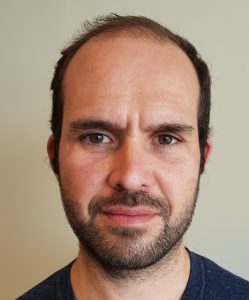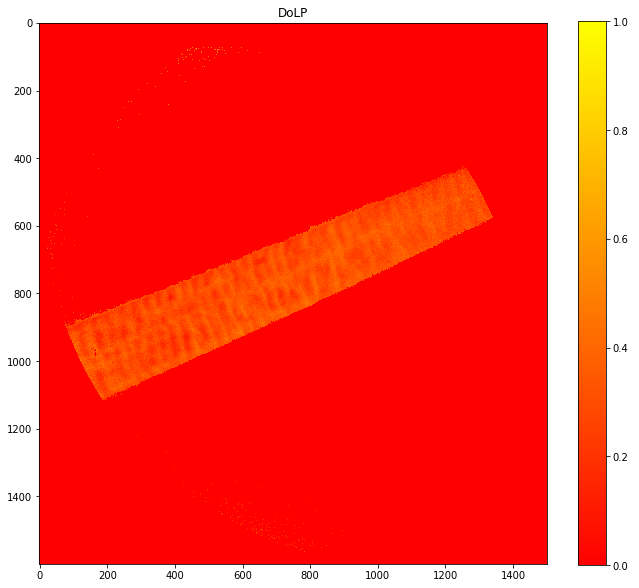An interview with Ariel Fernández
Posted by Mariana De Niz, on 26 August 2022

MiniBio: Ariel Fernández is an Assistant Professor at the Physics Department, Engineering Faculty, Universidad de la República, Uruguay and has been an Invited Researcher at the Department of. Electrical & Computational Engineering, University of Connecticut, United States. He completed his BSc, MSc and PhD degrees in Physics at Universidad de la República, Uruguay. He is a researcher level I at National Research System, Uruguay and level 3 at (Basic Science Development Program, Physics Area. He is also a member of OPTICA, SPIE and Uruguayan Society of Physics. His research interests include processing of optical information, in particular, phase and geometrical polarization in basic and technological applications, with a great interest in microscopy.
What inspired you to become a scientist?
I have always been curious and a bit stubborn 🙂 in trying to find the solution to an exercise or problem so I would say that somehow I’m “tuned” to science since an early age! But my true inspiration to become a scientist were my Physics teachers at high school who open to me the door to the most fabulous adventure of knowledge from the last 400 years of human kind.
You have a career-long involvement in microscopy. What inspired you to choose this career path?
Time for an early warning: I won’t consider myself as a microscopist! I would rather say that I work in Optics and I have a great interest in developments related to microscopy. The path that took me here has passed through a variety of landscapes, I have a background in Physics and I had the opportunity to take grad courses from many different fields like Particle Physics, Non-linear Physics and Quantum Computation. I specialized in Complex Systems for my MSc. Degree. For my PhD degree I wanted to incorporate some lab, applied research and ended up working in Optics. But the discipline also implies theoretical and computational work. Optics is also a great field where joined efforts in common from Physics, Engineering, Biology, Mathematics, can make the difference. I truly enjoy working with researchers and students from different fields.
Can you tell us a bit about what you have found uniquely positive about becoming a researcher in Uruguay, from your education years?
One of the great advantages is that the most important University in Uruguay, both in the number of students (100000+) as well as in the research output (roughly 70% of the papers, projects, etc) is not only public, but free. Of course you need some financial support to study and there are not many scholarships. In addition to this, if your family depends on the income from your work, it is really hard to be a student in higher education. This reality might be the same in many other parts of the world, but students from Universidad de la República do not need to take a loan or have their parents save during many years to study there.
Can you tell us a bit about your work in optics, and developments you are currently working on?
I’m currently working in different spatial multiplexing strategies for polarization and phase microscopy aiming at developing quantitative methods that can work in real-time. The possibility of obtaining Stokes parameters or retrieving phase from a sample in a snapshot can open up the possibility to tackle dynamic phenomena like cell migration for example with better precision. I also work in pattern recognition, in particular the detection of geometrical features – for example by means of the Hough transform, which can serve as a tool for region labeling in applications related to microscopy. I also collaborate in research work related to fluorescence microscopy and it has turned up to be one of my favourite techniques.
Did you have many opportunities to interact with other Latin American groups, outside of Uruguay?
I have ongoing collaborations, in particular in polarization imaging with researchers from Mexico with whom we have also worked in different optical setups for optical information processing. I am also in touch with colleagues from Chile and Colombia regarding topics related to Computational Imaging.
Having worked abroad, what were some of the things you found to be very different between doing research in Uruguay, and abroad?
In my experience of being abroad as invited researcher I haven’t found huge differences besides the capability of bigger universities to obtain more expensive equipment and the possibility of publishing in open access journals more frequently than in Uruguay. One thing (that is somehow changing now) that is quite different is the cultural diversity that you can find abroad, that is something enriching that helps scientific work to be clearer and more profound.
Have you ever faced any specific challenges as a Uruguayan researcher, working abroad?
I can’t think about any specific challenge related to being Uruguayan or Latin American when working in the United States for example. The challenge that you really face is to prove yourself that you are capable of doing research outside of the “comfort zone” of the lab that you know better and how in the end are the ideas that prevail over second order things.
Who are your scientific role models (both Uruguayan and foreign)?
I think that I have been able to learn something from each of my advisors and PIs that I have worked with. In Optics in particular I try to follow the example from those great scientists who have been able to develop practical, applied work while also achieving great theoretical developments and who stick to the foundations of the discipline in their papers.
What is your opinion on gender balance in Uruguay, given current initiatives in the country to address this important issue. How has this impacted your career?
I’m really concerned about gender balance: my wife is a scientist and Professor as I am, we have a little girl and we have female students in our labs too. I think that the gender bias in the academia has different manifestations according to the personal circumstances but for me there is a clear breaking point for female scientists that is when they decide to become mothers. The problem is more general, I would say that being a male scientist and a father is challenging too! 🙂 but the challenge for female scientists is really harder. At that point is where you can visualize the “glass ceiling”. In the University in particular there is no difference between salaries for women and men but on the other hand it is not difficult to observe that for those who have decided to form a family and be in charge of it, the opportunities to obtain the higher Professorship levels are lower. We also need to make efforts to encourage girls to pursue a scientific career if that is what they enjoy. I can tell from the interaction with my daughter and her friends that curiosity lies in any kid, regardless of being a boy or a girl and we need to protect all of them from people that might tell them directly or indirectly that they are not good for something. That is a responsibility of all of the educational system, the university included. From my teaching experience I can also tell that there are lots of really smart female students, but we suffer from cultural biases that somehow make them feel that they are not capable and finally we all suffer from the draining of an enormous amount of talent that way (the first brain drain is there!). That is a loss for Science as a whole and in the end for the society itself.
What is your favourite type of microscopy and why?
I have the opportunity to collaborate in projects related to 3D fluorescence microscopy and the images that you can obtain are stunning. Even not as popular as fluorescence, I think that phase microscopy, in particular quantitative phase, is extremely interesting (2 Nobel prizes in Physics, Zernike and Gabor, are to some extent related to it).

What is the most extraordinary thing you have seen by microscopy? An eureka moment for you?
Visualizing with polarized light has always some kind of Eureka or whow! moment since you are using a property of light that the eye is not able to distinguish.
What is an important piece of advice you would give to future Uruguayan scientists? and especially those specializing as microscopists?
If you are crazy enough to consider this as a job for you, go for it. Science is a great area of work and you would probably never get bored of it. If you are lucky enough, you will be able to meet great people and laboratories too.
Where do you see the future of science and microscopy heading over the next decade in Uruguay, and how do you hope to be part of this future?
As a small and developing country we still need to ensure stable, increasing funding for all the scientific system. We are really running behind even in comparison to our Latin American neighbours and more so, in comparison with the Global North. On the other hand, and in particular in microscopy there are many different efforts at different institutions that we need to translate perhaps into a MSc or PhD in Microscopy. I hope that I can take part somehow in that process in the years to come.
Beyond science, what do you think makes Uruguay a special place to visit and go to as a scientist?
I think that the special things here are those that I miss when I am abroad; I enjoy the blue sky and the coast, our capital city Montevideo has almost 20km of coast with really beautiful beaches, not to mention those you can find in the Eastern part of the country (warning: if you are from Mexico or Brazil, don’t expect warm water!). I also enjoy our food, a heritage from the immigrants mostly from Spain and Italy, but also many other parts of the world, that has provided us with a nice mix of dishes and breads. If you enjoy coffee, you will also find yourself with many new specialty coffee places with really good products. I would finally say that people from abroad find us Uruguayans as friendly and easy going, but that would go against our fame of being humble too!


 (No Ratings Yet)
(No Ratings Yet)